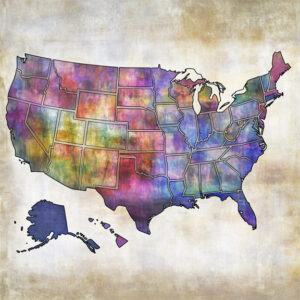 Feminists tend to criticize the portrayal of female superheroes in comics. This criticism is usually body types of female heroes, the poses, and skimpy. One response is the Hawkeye Initiative in which Hawkeye (or another male superhero) is drawn in the same pose and costume type as a female superhero. As would be imagined, the male hero looks absurd when so posed and costumed, which is the point of the criticism.
Feminists tend to criticize the portrayal of female superheroes in comics. This criticism is usually body types of female heroes, the poses, and skimpy. One response is the Hawkeye Initiative in which Hawkeye (or another male superhero) is drawn in the same pose and costume type as a female superhero. As would be imagined, the male hero looks absurd when so posed and costumed, which is the point of the criticism.
While the presentation of female superheroes in comics is a first world problem, it does raise important concerns about potential harms, such as perceptions of body image. But my interest here is in superhero costumes from a practical standpoint. While I am no expert on fashion, I draw on my experiences as an athlete, martial artist and gamer to guide the discussion.
In the realm of fiction, being a superhero generally means being very physically active and engaging in combat. This means that a sensible superhero would have a costume designed to take these into account.
While I am not a superhero, decades of competitive running give me some insight into what to wear when engaged in physical activity. One important factor is mobility, as you need to be able to move properly in athletic clothing. One approach is loose fitting clothing that allows a lot of motion (such as running shorts) while another is the tight-fitting spandex (such as running tights) that also allow free motion. The idea of heroes wearing tights makes sense for the same reason it makes sense for runners to wear them. Another important factor is temperature management. Most heroes will generate body heat and sweat when they are active. So, they will need to be able to stay cool while active but also remain warm when they are just patrolling or engaging in dramatic dialogue.
As a runner, I wear as little as possible when I am running in warm weather. These are just shorts, socks and shoes. Many other runners are similar, with women generally adding the legally necessary coverage. Presumably a superhero that runs about would want to wear as little as possible. As such, in warm weather superheroes dressed in super versions of running clothes would make sense and they would have lots of skin exposed. This assumes that the superheroes need to stay cool when being active. A superhero that had no need to sweat could wear whatever they wished—the concerns of mere sweaty mortals would not matter to them.
Considering this, it would make sense for female superheroes to wear the same amount of clothing as competitive runners: not much. However, the same would also apply to male superheroes.
While wearing minimal clothing is a good idea when active under warm conditions, like runners facing cooler weather, superheroes would alsoneed to cover up more to remain comfortable and perhaps avoid hypothermia. Practical and sensible superheroes should also consider following a standard practice of runners: wearing more clothing to warm up or when waiting to compete, then shedding clothing when it is time to get down to business. Since hanging out all day in sweat-soaked clothes is uncomfortable, sensible heroes would also change costumes when they can. And shower.
Unlike runners, superheroes engage in combat, and this imposes another set of practical considerations. Since superheroes tend to fight hand to hand, it would be unwise to have costumes that provide a foe with easy handholds. As such, tight costumes without extraneous material would be the best choice. Capes would, as always, be a poor choice.
When engaging in combat, it has always been a good idea to have protective gear. Some of this protection is intended to deal with the incidentals of combat, such as ending up in contact with rough surfaces (like being knocked down in the street) but most of it is supposed to provide protection against attacks. This protection usually takes the form of armor, ranging from ballistic clothing to powered armor (like Iron Man wears).
Armor does have the usual trade-offs: it tends to restrict movement, tire out the wearer quicker, and create overheating problems. As such, heroes that rely on speed and freedom of movement might be inclined to avoid armor or at least keep it to a minimum. The classic Batman, for example, did not wear any armor. However, as anyone who plays games like D&Ds or faces combat in the real world knows, armor is usually a good idea when other people are trying to kill you.
To be effective armor must at least cover the important parts (usually the head and torso) and that means exposing a lot of skin is a bad idea. As such, the “classic” fantasy drawings of heroines in armor are absurd. Or, as a veteran D&D player put it, “if the enemy can see your cleavage, they can cut your boobs.” And no one wants their boobs cut.
Superheroes who have powers that make them invulnerable or otherwise grant great defensive powers do not need to rely on armor and they can safely wear whatever they like; such as Power Girl’s famous cleavage window costume. While the classic Wonder Woman relied on her magical bracelets, the updated version seems to be close to Superman in her ability to withstand damage. As such, she would not need to rely on armor for protection. Superman, of course, does not need armor since his skin is almost certainly stronger than almost anything he could find on earth. As such, a superhero who still had to deal with the sweating problem but did not need armor would want to wear as little as possible, be they male or female. Perhaps this explains why Wonder Woman still dresses the way she does.

 While homophobia can still be exploited for political advantage, it is not as effective as it used to be. In response to its diminished political value, the American right embraced transphobia. Before this, most Americans gave little thought to such matters as transpeople competing in sports and bathroom bills. Now that Trump has reclaimed the Whitehouse, it is certain that transphobia will continue to be pushed onto the American people and exploited for political advantage. This will give rise to various moral questions, centered around sports and bathrooms. The right seems extremely interested in bathrooms and who is using them. While one could simply assume that their views are, at best, based on ill-founded but sincere fears, there is the moral question of whether transpeople should be allowed to choose their bathrooms.
While homophobia can still be exploited for political advantage, it is not as effective as it used to be. In response to its diminished political value, the American right embraced transphobia. Before this, most Americans gave little thought to such matters as transpeople competing in sports and bathroom bills. Now that Trump has reclaimed the Whitehouse, it is certain that transphobia will continue to be pushed onto the American people and exploited for political advantage. This will give rise to various moral questions, centered around sports and bathrooms. The right seems extremely interested in bathrooms and who is using them. While one could simply assume that their views are, at best, based on ill-founded but sincere fears, there is the moral question of whether transpeople should be allowed to choose their bathrooms. While the anti-abortion movement claimed a great victory when the
While the anti-abortion movement claimed a great victory when the  In discussing the ethics of trans athletes competing, some people have made the claim that trans athletes would be cheating if they competed against non-trans women. This requires sorting out the notion of cheating. One obvious approach is to a make a moral comparison between transition and obvious forms of cheating, such as using banned performance enhancing drugs.
In discussing the ethics of trans athletes competing, some people have made the claim that trans athletes would be cheating if they competed against non-trans women. This requires sorting out the notion of cheating. One obvious approach is to a make a moral comparison between transition and obvious forms of cheating, such as using banned performance enhancing drugs. The culture war over trans athletes extended to the Paris Olympics when
The culture war over trans athletes extended to the Paris Olympics when  While most
While most  Two ways I track the culture war are my Facebook feed and memos about changes to higher education. One recent conflict was the Great Light Beer Battle of 2023. For those unfamiliar with this significant and world changing battle,
Two ways I track the culture war are my Facebook feed and memos about changes to higher education. One recent conflict was the Great Light Beer Battle of 2023. For those unfamiliar with this significant and world changing battle,  While the title of this essay could mean that Boebert and Greene’s culture war against “the progressives” and “the woke” got them into congress, it is not what I mean. What I mean is that progressive feminists fought for the rights of women to vote and hold office and without them, Boebert and Greene would be unable to do either.
While the title of this essay could mean that Boebert and Greene’s culture war against “the progressives” and “the woke” got them into congress, it is not what I mean. What I mean is that progressive feminists fought for the rights of women to vote and hold office and without them, Boebert and Greene would be unable to do either.
 In my last essay I discussed TERFs (Trans-Exclusionary Radical Feminists), with a focus on the seemingly odd alliance between TERFs (or
In my last essay I discussed TERFs (Trans-Exclusionary Radical Feminists), with a focus on the seemingly odd alliance between TERFs (or